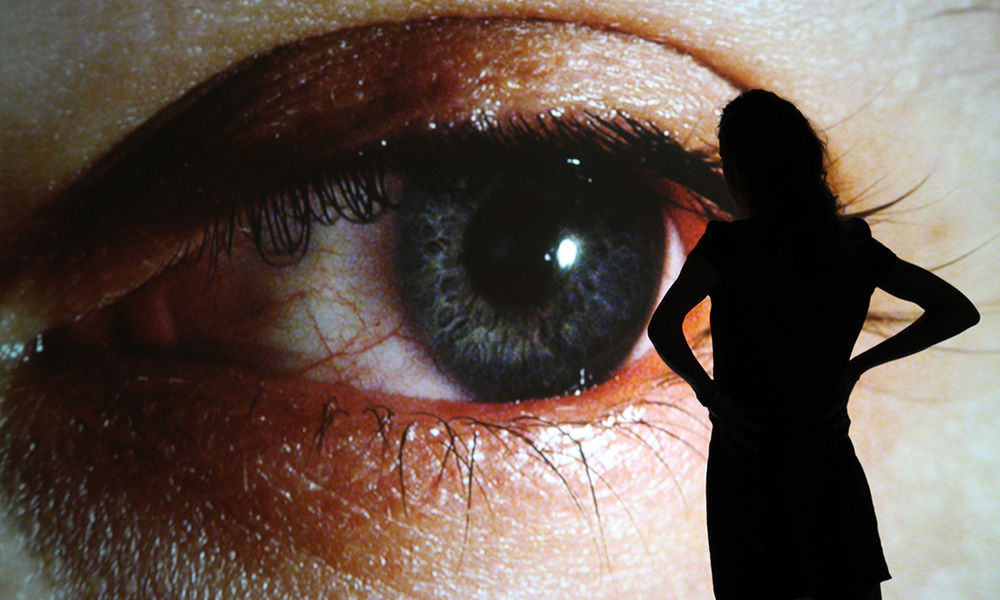The Body Electric
November 5, 2020-May 30, 2021
Museum of Art and Design at MDC
The Body Electric
In an age dominated by digital technology, The Body Electric explores themes of the real and the virtual, the organic and the artificial, moving from the world into the screen and back again. Looking across the past fifty years, the exhibition presents an intergenerational and international group of artists who have seized upon the screen as a place to rethink the body and identity, with a particular emphasis on questions of gender, sexuality, class, and race. The exhibition contextualizes contemporary artists who today engage with digital technology and the influence of the Internet within a broader art historical narrative to reveal shared interests that emerge across generations, despite differing technological means.
Video cameras record private moments and public spectacles, photographs capture alternate personas, and digital avatars simulate human behavior. Together, they reveal ways that technology changes our collective understanding of the body, everyday life, and sense of self. Works in the exhibition—from the inviting and familiar to the provocative and unsettling—question ways that photographic, televisual, and digital media affect our perceptions of the human body and ordinary experience.
The exhibition begins with a pioneering generation of artists active in the mid-1960s—Jaime Davidovich, Marta Minujín, Nam June Paik, and Wolf Vostell—for whom the television was both the subject and object of their expanded practices that spanned performance, sculpture, and the moving image. Footage of performances by the Wooster Group offers a frenetic meditation on the all-pervasive presence of technology, and the fusion of body and screen.
Works by Sanja Iveković, Anna Maria Maiolino, Ana Mendieta, Claudio Perna, Howardena Pindell, Paul Mpagi Sepuya, and Cindy Sherman chart a history of artists turning the lens of the camera onto their own bodies, creating personal spaces of performance, whether via the 1960s Portapak camera or today’s selfie. Disembodied beings and digital avatars populate contributions by Laurie Anderson, Ed Atkins, Pierre Huyghe, and Sidsel Meineche Hansen, while sculptures by Anicka Yi, as well as an immersive installation by Trisha Baga, explore the slippery ambiguity of materials poised between the digital and analog, the real and rendered.
For Gretchen Bender, Lynn Hershman Leeson, Sondra Perry, and Martine Syms, the lens of the camera creates a space to rethink the representation of sociopolitical identities and to question the structures that govern our understanding of race and gender. Works by Jes Fan, Josh Kline, Carolyn Lazard, and Marianna Simnett reflect on the malleability of the body, speaking to themes of care, surgical intervention, and chemical and biological processes imperceptible to the human eye. And Zach Blas’s artificially intelligent Icosahedron (2019) takes the form of a crystal ball.
Full list of artists in the exhibition: Vito Acconci, Laurie Anderson, Ed Atkins, Trisha Baga, Ivana Bašić, Gretchen Bender, Sadie Benning, Dara Birnbaum, Zach Blas, George Brecht and Robert Watts, Nancy Burson, James Byrne, Peter Campus, Petra Cortright, Andrea Crespo, Jaime Davidovich, Otávio Donasci, Juan Downey, Zackary Drucker, Rhys Ernst, VALIE EXPORT, Jes Fan, Aneta Grzeszykowska, K8 Hardy, Lyle Ashton Harris, Lynn Hershman Leeson, Tishan Hsu, Juliana Huxtable, Pierre Huyghe, Sanja Iveković, Josh Kline, Carolyn Lazard, Mark Leckey, Rafael Lozano-Hemmer, Anna Maria Maiolino, Christian Marclay, Helen Marten, Sidsel Meineche Hansen, Ana Mendieta, Marta Minujín, Peter Moore, Bruce Nauman, Nam June Paik, Letícia Parente, Claudio Perna, Sondra Perry, Howardena Pindell, Ulrike Rosenbach, Paul Mpagi Sepuya, Cindy Sherman, Marianna Simnett, Lorna Simpson, Stelarc, Hito Steyerl, Martine Syms, Ryan Trecartin, Wolf Vostell, the Wooster Group, and Anicka Yi.
The Body Electric is organized by the Walker Art Center. The exhibition is made possible by generous support from the Carl & Marilynn Thoma Art Foundation. Additional support provided by Ellen and Jan Breyer and the David and Leni Moore Family Foundation. The Body Electric is curated by Pavel Pyś, Curator, Visual Arts, Walker Art Center, with Jadine Collingwood, Curatorial Fellow. The presentation at MOAD is organized by Rina Carvajal, Executive Director and Chief Curator, with Isabela Villanueva, Consulting Assistant Curator, and is made possible by the Miami-Dade County Department of Cultural Affairs and the Cultural Affairs Council, the Miami-Dade County Mayor and Board of County Commissioners; and the State of Florida, Department of State, Division of Cultural Affairs and the Florida Council on Arts and Culture. Additional support was received from the John S. and James L. Knight Foundation as part of its Immersive Technologies in the Arts initiative.
Ed Atkins, Happy Birthday!! (video still), 2014, 16:9 HD projection with 5.1 surround sound. Courtesy of the artist and Gavin Brown's Enterprise, New York/Rome.
Trisha Baga, Mollusca & The Pelvic Floor, installation view, 2018. Courtesy the artist and Greene Naftali, New York.
Otávio Donasci, 30 anos de Videocriaturas (30 Years of Videocreatures) (video still), 2011, video (color, sound), 12:40 minutes. Courtesy of the artist.
Juan Downey, Plato Now, 1973, performance view, Everson Museum of Art, Syracuse, New York. Photo by Harry Shunk. Courtesy of the Juan Downey Foundation.
Aneta Grzeszykowska, Selfie #17, 2014, pigment ink on cotton paper. Courtesy of Raster Gallery, Warsaw.
Sidsel Meineche Hansen, SECOND SEX WAR ZONE (detail), 2016, DICKGIRL 3D(X) in VR format, gaming PC, Oculus Rift headset, headphones, vegan leather beanbag. Courtesy of the artist and Rodeo Gallery, London/Piraeus.
Lynn Hershman Leeson, Roberta Construction Chart, 1973/1994. Collection Walker Art Center, Gift of Dr. and Mrs. Arthur Lester, 1994.
Juliana Huxtable, Lil' Marvel, 2015, color inkjet print, ed. AP of 3. Courtesy of the artist and JTT, New York.
Marta Minujín, Simultaneidad en Simultaneidad (Simultaneity in Simultaneity), 1966, performance view, Instituto Torcuato Di Tella, Buenos Aires. Courtesy of the artist and the Institute for Studies on Latin American Arts (ISLAA).
Cindy Sherman, Untitled #92, 1981, chromogenic color print, 24 x 48 inches (61 x 121.9 cm). Courtesy of the artist and Metro Pictures, New York.


